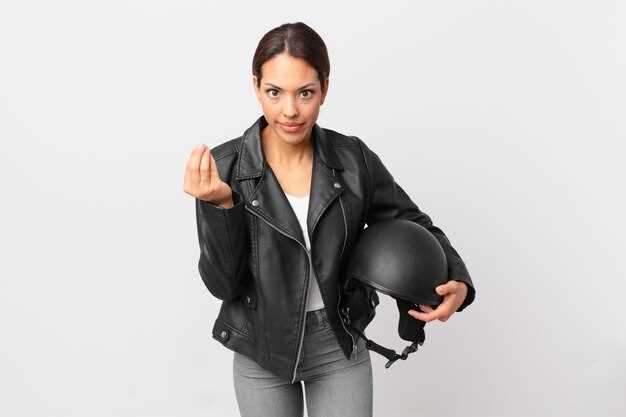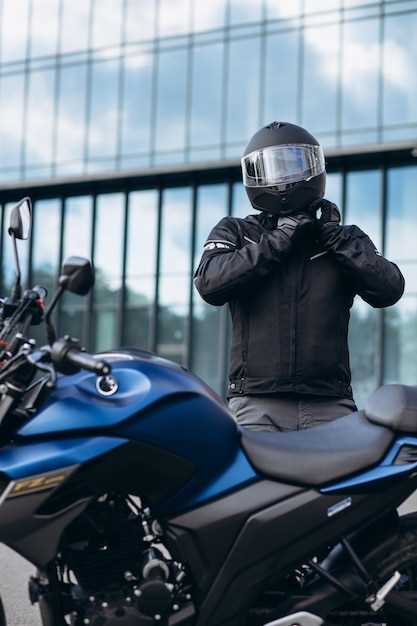

Riding a motorcycle can be one of the most exhilarating experiences, offering a unique sense of freedom and connection to the road. However, it also comes with its own set of risks. Motorcycle accidents can lead to severe injuries or even fatalities, making safety paramount for every rider.
Understanding safety while riding is crucial. Many accidents occur due to factors such as poor visibility, lack of protective gear, and unsafe riding practices. Adopting safety measures can significantly reduce the likelihood of encountering dangerous situations, allowing riders to enjoy their journeys while minimizing risks.
In this article, we will cover essential safety tips that every motorcycle rider should know. From the importance of wearing appropriate gear to maintaining situational awareness, these guidelines aim to enhance your riding experience and protect you from potential accidents.
Choosing the Right Gear for Maximum Protection

For every motorcycle rider, selecting the appropriate gear is crucial for ensuring safety and minimizing injuries in the event of accidents. The right equipment not only provides comfort but also enhances your protection against various hazards on the road.
A certified helmet is the cornerstone of safety gear. Look for ones that meet safety standards and offer features like a full-face design to protect your head and face from impact. A well-fitted helmet significantly reduces the risk of severe head injuries during accidents.
Next, invest in a high-quality riding jacket made from durable materials like leather or specialized synthetic fabrics. These jackets often come with built-in armor at the shoulders, elbows, and back, which absorbs impact during a fall. Additionally, reflective elements enhance visibility, making you more noticeable to other drivers.
Pants designed specifically for motorcycle riding provide essential protection. Choose reinforced riding pants that resist abrasions and feature knee armor. This gear acts as a barrier between you and the road, reducing the risk of serious injuries during accidents.
Gloves are another important component of your protective gear. Opt for gloves that offer a snug fit, good grip, and padding, especially at the knuckles. They shield your hands from abrasions and impacts, which is vital as many riders instinctively use their hands to break falls.
Finally, ensure you have the right footwear. Motorcycle boots should cover your ankles, ideally made from leather or other resilient materials. They provide stability, protection, and support, minimizing the risk of foot injuries in accidents.
In summary, thoroughly consider each piece of gear you choose as a motorcycle rider. By selecting high-quality helmets, jackets, pants, gloves, and boots, you can dramatically improve your safety and reduce the likelihood of serious injuries during accidents.
Important Defensive Riding Techniques to Avoid Accidents

Defensive riding is crucial for enhancing motorcycle safety and reducing the risk of accidents. By adopting specific techniques, riders can position themselves to react effectively to potential hazards on the road.
1. Stay Aware of Your Surroundings: Always maintain a high level of situational awareness. Regularly scan your environment for potential dangers such as pedestrians, other vehicles, and road conditions. This vigilance allows for timely reactions to unforeseen events.
2. Maintain a Safe Following Distance: Keep a safe distance from the vehicle in front of you. This gives you ample time to react if they suddenly brake or swerve. A good rule of thumb is to maintain at least a two-second gap, increasing it in adverse weather conditions.
3. Use Your Signals: Always signal your intentions to other road users. Whether you are turning, changing lanes, or stopping, clear communication through signals is vital. This keeps other drivers informed and reduces the chances of miscommunication, which can lead to accidents.
4. Position Your Motorcycle Effectively: Be aware of your lane position. Riding in the best position can enhance your visibility and allow you to have an escape route in case of an emergency. Avoid blind spots by staying in areas where you can be easily seen by others.
5. Anticipate Other Drivers’ Actions: Predicting the behavior of other road users can significantly reduce your risk of being involved in a crash. Look for signs of erratic behavior or distractions in cars, such as swaying or sudden movements.
6. Practice Emergency Maneuvers: Regularly practice emergency stops and evasive maneuvers in a controlled environment. Familiarity with how your motorcycle reacts can enhance your ability to respond quickly in real-life situations.
7. Adjust to Weather Conditions: Bad weather can dramatically increase the risk of an accident. Adjust your riding style in rain, snow, or fog by reducing speed, increasing following distance, and being extra cautious at intersections.
Understanding Motorcycle Maintenance for Safe Riding
Regular motorcycle maintenance is crucial for enhancing safety and reducing the risk of accidents. Riders should adopt a systematic approach to inspecting and maintaining their motorcycles to ensure optimal performance and reliability. This includes checking the essential components such as brakes, tires, lights, and fluids.
Brakes are vital for a safe riding experience. Riders must routinely inspect brake pads for wear and ensure that brake fluid levels are adequate. Failure to maintain brakes can lead to dangerous situations, especially in emergency stops. Similarly, tires should be checked for proper inflation and tread depth, as they significantly affect grip and stability.
The lighting system, including headlights, taillights, and turn signals, should also be regularly evaluated. Proper visibility is essential for rider safety, particularly in low-light conditions and during adverse weather. A non-functioning light can lead to visibility issues and increase the likelihood of accidents.
Fluids play a critical role in the operation of the motorcycle. Riders should inspect engine oil, coolant, and brake fluid levels regularly and replace them as needed. Neglecting fluid maintenance can lead to engine overheating or brake failure, posing serious risks during rides.
Lastly, keeping the motorcycle clean and free from debris can prevent corrosion and mechanical issues, contributing to the overall maintenance and safety of the vehicle. Regular maintenance checks can help riders identify potential problems before they develop into significant safety hazards. A well-maintained motorcycle not only enhances safety but also improves the overall riding experience.
